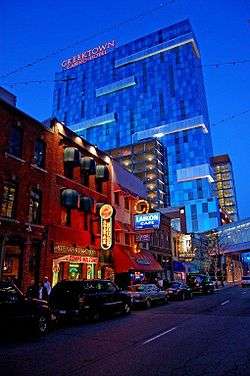Greek Americans
Greek Americans (Greek: Ελληνοαμερικανοί, Ellinoamerikanoi) are Americans of full or partial Greek ancestry. Over 1.4 million Americans are of Greek descent.[1] 321,444 people older than five spoke Greek at home in 2010.[12]
| Total population | |
|---|---|
| 1,456,000-2,000,000[1] 0.6% of the U.S. population (2010)[1] | |
| Regions with significant populations | |
| Languages | |
| Religion | |
| Predominantly Greek Orthodox |
Greek Americans have the highest concentrations in the New York City,[2][13][14] Boston,[3] and Chicago[4] regions, but have settled in major metropolitan areas across the United States. In 2000, Tarpon Springs, Florida, was home to the highest per capita representation of Greek Americans in the country (25%). The United States is home to the largest Greek community outside of Greece, ahead of Australia, Cyprus, Albania, Canada, Germany, and the United Kingdom.
History
Early history

The first Greek known to have been to what is now the United States was Don Doroteo Teodoro, a sailor who landed in Boca Ciega Bay at the Jungle Prada site in present-day St. Petersburg, FL with the Narváez expedition in 1528. [15] [16][17] He was instrumental in building the rafts that the expedition survivors built and sailed from present-day St. Mark's River in Florida until they were shipwrecked near Galveston Island, Texas. Teodoro had been captured by natives as they sailed along the Gulf coast shoreline toward the west, and was never seen again. [18]
In 1592, Greek captain Juan de Fuca (Ioannis Fokas or Apostolos Valerianos) sailed up the Pacific coast under the Spanish flag, in search of the fabled Northwest Passage between the Pacific and the Atlantic. He reported discovering a body of water, a strait which today bears his name: the Strait of Juan de Fuca, which today forms part of the Canada–United States border.
About 500 Greeks from Smyrna, Crete, and Mani settled in New Smyrna Beach, Florida in 1768. The colony was unsuccessful, and the settlers moved to St. Augustine in 1776. The St Photios Greek Chapel exists as a remnant of their presence, and is believed to be the oldest still standing Greek Orthodox religious structure in the United States.[19][20]
19th century
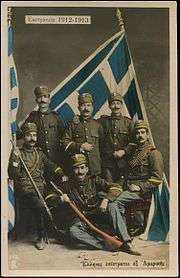
The first significant Greek community to develop was in New Orleans, Louisiana during the 1850s. By 1866, the community was numerous and prosperous enough to have a Greek consulate and the first official Greek Orthodox Church in the United States.[21] During that period, most Greek immigrants to the New World came from Asia Minor and those Aegean Islands still under Ottoman rule. By 1890, there were almost 15,000 Greeks living in the U.S.
Immigration picked up again in the 1890s and early 20th century, due largely to economic opportunity in the U.S., displacement caused by the hardships of Ottoman rule, the Balkan Wars, and World War I. Most of these immigrants had come from southern Greece, especially from the Peloponnesian provinces of Laconia and Arcadia.[22] 450,000 Greeks arrived to the States between 1890 and 1917, most working in the cities of the northeastern United States; others labored on railroad construction and in mines of the western United States; another 70,000 arrived between 1918 and 1924. Each wave of immigration contributed to the growth of Hellenism in the U.S.
Greek immigration at this time was over 90% male, contrasted with most other European immigration to the U.S., such as Italian and Irish immigration, which averaged 50% to 60% male. Many Greek immigrants expected to work and return to their homeland after earning capital and dowries for their families. However, the loss of their homeland due to the Greek Genocide and the 1923 population exchange between Greece and Turkey, which displaced 1,500,000 Greeks from Anatolia, Eastern Thrace, and Pontus caused the initial economic immigrants to reside permanently in America. The Greeks were de jure denaturalized from their homelands and lost the right to return, and their families were made refugees. Additionally, the first widely implemented U.S. immigration limits against non Western European immigrants were made in 1924, creating an impetus for immigrants to apply for citizenship, bring their families and permanently settle in the U.S. Fewer than 30,000 Greek immigrants arrived in the U.S. between 1925 and 1945, most of whom were "picture brides" for single Greek men and family members coming over to join relatives.[23][24]
20th century
.jpg)
The events of the early 1920s also provided the stimulus for the first permanent national Greek American religious and civic organizations. Greeks again began to arrive in large numbers after 1945, fleeing the economic devastation caused by World War II and the Greek Civil War. From 1945 until 1982, approximately 211,000 Greeks emigrated to the United States. These later immigrants were less influenced by the powerful assimilation pressures of the 1920s and 1930s and revitalized Greek American identity, especially in areas such as Greek-language media.
Greek immigrants founded more than 600 diners in the New York metropolitan area in the 1950s through the 1970s. Immigration to the United States from Greece peaked between the 1950s and 1970.[25][26] After the 1981 admission of Greece to the European Union, annual U.S. immigration numbers fell to less than 2,000. In recent years, Greek immigration to the United States has been minimal; in fact, net migration has been towards Greece. Over 72,000 U.S. citizens currently live in Greece (1999); most of them are Greek Americans.
The predominant religion among Greeks and Greek Americans is Greek Orthodox Christianity. There are also a number of Americans who descend from Greece's smaller Sephardic and Romaniote Jewish communities.
21st century
In the aftermath of the Greek financial crisis, there has been a resurgence of Greek emigration to New York City since 2010, accelerating in 2015, and centered upon the traditional Greek enclave of Astoria, Queens.[27] According to The New York Times, this new wave of Greek migration to New York is not being driven as much by opportunities in New York as it is by a lack of economic options in Greece itself.[27]
Demographics
| Year | Number |
|---|---|
| 1980[28] | 959,856 |
| 1990[29] | 1,110,373 |
| 2000[30] | 1,153,307 |
| 2010[31] | 1,316,074 |



Population by state
Population by state according to the 2011-2015 American Community Survey.[32]
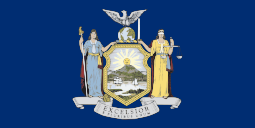
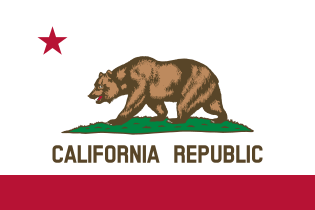
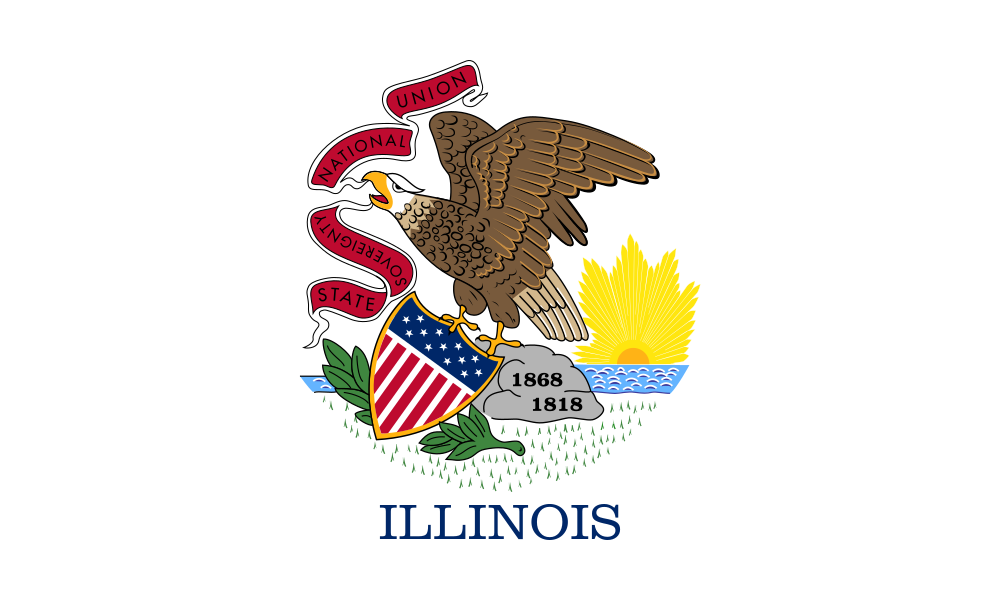

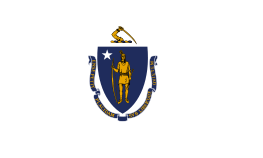
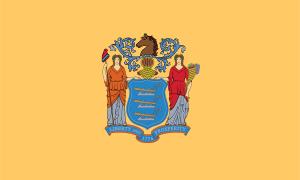
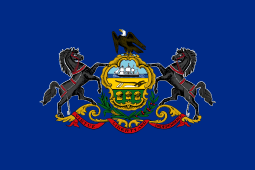
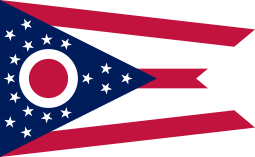


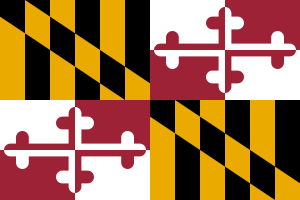


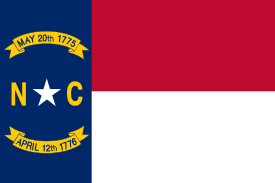
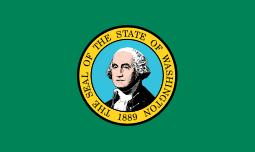

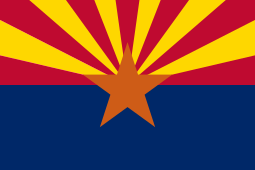
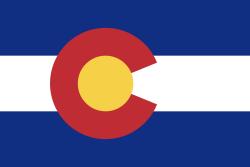
.svg.png)

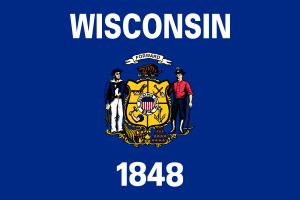

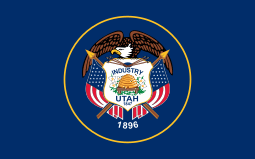
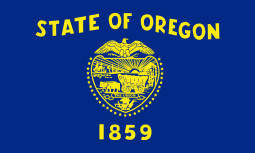


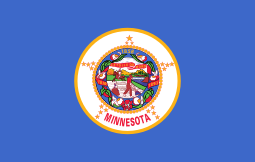
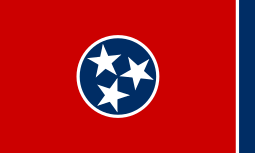
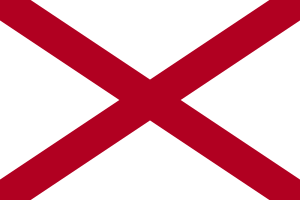
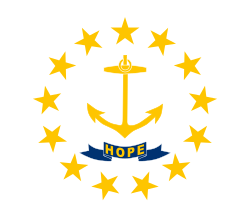
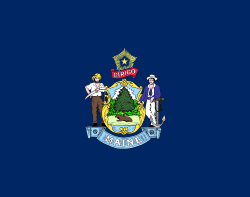
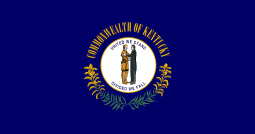
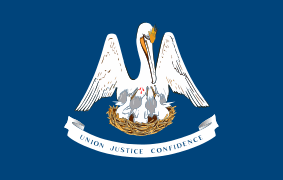


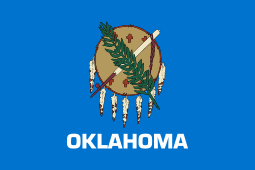
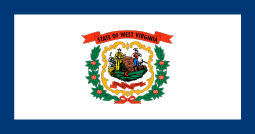
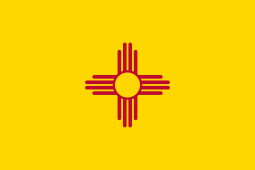

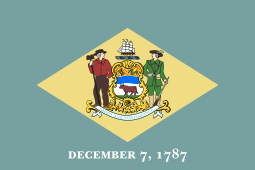

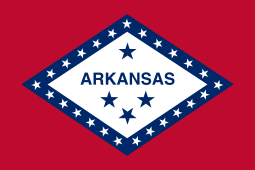


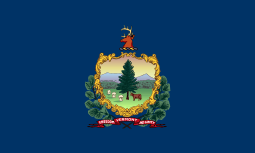
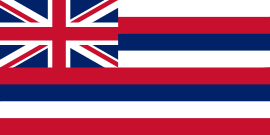
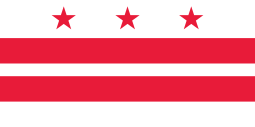
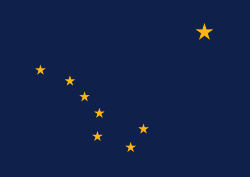
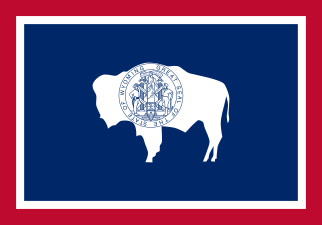
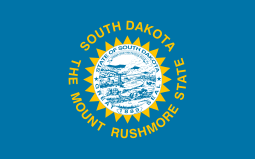

Largest communities
Greek-American communities in the US according to the 5 Year Estimates of the (2016 American Community Survey):[33]
United States by Ancestry : 1,282,655
United States by Country of Birth : 135,743
Top CSA's by Ancestry:
- New York-Newark-Bridgeport, NY-NJ-CT-PA CSA: 196,229
- Boston-Worcester-Manchester, MA-RI-NH CSA: 101,263
- Chicago-Naperville, IL-IN-WI CSA: 96,333
- Los Angeles-Long Beach, CA CSA: 56,566
- Washington-Baltimore-Arlington, DC-MD-VA-WV-PA CSA: 51,105
- San Jose-San Francisco-Oakland, CA CSA: 39,372
- Philadelphia-Reading-Camden, PA-NJ-DE-MD CSA: 37,518
Top CSA's by Country of Birth:
- New York-Newark-Bridgeport, NY-NJ-CT-PA CSA: 38,315
- Chicago-Naperville, IL-IN-WI CSA: 14,891
- Boston-Worcester-Manchester, MA-RI-NH CSA: 12,370
- Los Angeles-Long Beach, CA CSA: 6,308
- Philadelphia-Reading-Camden, PA-NJ-DE-MD CSA: 5,971
Top MSA's by Ancestry:
- New York-Newark-Bridgeport, NY-NJ-CT-PA CSA: 169,341
- Chicago-Naperville-Elgin, IL-IN-WI: 94,796
- Boston-Worcester-Manchester, MA-RI-NH CSA: 67,382
- Los Angeles-Long Beach-Anaheim, CA: 42,552
- Philadelphia-Camden-Wilmington, PA-NJ-DE-MD: 31,612
- Tampa-St. Petersburg-Clearwater, FL: 24,173
Top MSA's by Country of Birth:
- New York-Newark-Bridgeport, NY-NJ-CT-PA CSA: 34,373
- Chicago-Naperville-Elgin, IL-IN-WI: 14,705
- Boston-Worcester-Manchester, MA-RI-NH CSA: 8,923
- Los Angeles-Long Beach-Anaheim, CA: 5,404
- Philadelphia-Camden-Wilmington, PA-NJ-DE-MD: 4,920
- Tampa-St. Petersburg-Clearwater, FL: 4,297
Top States by Ancestry:
- New York: 146,526
- California: 135,321
- Illinois: 98,786
- Florida: 90,960
- Massachusetts: 82,363
- New Jersey: 64,347
- Pennsylvania: 61,361
Top States by Country of Birth:
- New York: 30,077
- Illinois: 14,644
- California: 12,148
- Massachusetts: 11,032
- Florida: 10,629
- New Jersey: 9,617
- Pennsylvania: 6,158
- Connecticut: 4,564
Communities by percentage of people of Greek ancestry
The US communities with the highest percentage of people claiming Greek ancestry are:[34]
- Tarpon Springs, Florida 25.00%
- Campbell, Ohio 9.30%
- Lincolnwood, Illinois 7.60%
- Plandome Manor, New York 7.50%
- Englewood Cliffs, New Jersey 7.20%
- Allenwood, New Jersey 6.60%
- South Barrington, Illinois 6.00%
- Palos Hills, Illinois 5.40%
- Nahant, Massachusetts 5.30%
- Alpine, New Jersey; Holiday, Florida; and Munsey Park, New York 5.20%
- East Marion, New York 5.00%
- Grosse Pointe Shores, Michigan and Grosse Pointe Township, Michigan; Palos Park, Illinois; and Upper Brookville, New York 4.90%
- Harbor Isle, New York 4.70%
- Lake Dalecarlia, Indiana 4.50%
- Barnum Island, New York 4.40%
- Peabody, Massachusetts 4.30%
- Livingston Manor, New York and University Gardens, New York 4.20%
- Oak Brook, Illinois 4.00%
- Dracut, Massachusetts 3.90%
- Harwood Heights, Illinois and Oyster Bay Cove, New York 3.80%
- Fort Lee, New Jersey; Hiller, Pennsylvania; Ipswich, Massachusetts; Long Grove, Illinois; Oakhurst, New Jersey; and Yorkville, Ohio 3.70%
- Broomall, Pennsylvania; Garden City South, New York; Norwood Park, Chicago, Illinois (neighborhood); and Plandome, New York 3.60%
- Flower Hill, New York; Manhasset, New York; Monte Sereno, California; Norridge, Illinois; Palisades Park, New Jersey; Palos Township, IL; and Windham, New York 3.50%
- Morton Grove, Illinois; Terryville, New York; and Wellington, Utah 3.40%
- Banks Township, PA (Carbon County, PA); Harmony, Pennsylvania (Beaver County, PA); Plandome Heights, New York; and Watertown, Massachusetts 3.30%
- Niles, Illinois and Niles Township, Illinois 3.20%
- Groveland, Massachusetts 3.10%
- Albertson, New York; Caroline, New York; Graeagle, California; Lynnfield, Massachusetts; Marple Township, Pennsylvania; and Stanhope, New Jersey 3.00%
- Foster Township, Pennsylvania; Manhasset Hills, New York; West Falmouth, Massachusetts; Winfield, Indiana; and Worth Township, Indiana (Boone County, IN) 2.90%
Communities by percentage of those born in Greece
The U.S. communities with the largest percentage of residents born in Greece are:[35]
| 1910a | |
| 1920a | |
| 1930a | |
| 1940a | |
| 1960a | |
| 1970a | |
| 1980[36] | |
| 1990[37] | |
| 2000[38] | |
| 2011[39] | 304,928 |
| ^a Foreign-born population only[40] | |
- Horse Heaven, Washington 3.8%
- Tarpon Springs, Florida 3.2%
- Palos Hills, Illinois 3.1%
- Harbor Isle, New York 3.1%
- Campbell, Ohio 3.1%
- Lincolnwood, Illinois 2.7%
- Englewood Cliffs, New Jersey 2.5%
- Bedford Park, Illinois 2.3%
- Twin Lakes, Florida 2.3%
- Holiday, Florida 2.1%
- Great Neck Gardens, New York 2.1%
- Norridge, Illinois 2.0%
- Palos Park, Illinois 1.9%
- Barnum Island, New York 1.9%
- Munsey Park, New York 1.8%
- Foxfield, Colorado 1.7%
- Cedar Glen West, New Jersey 1.7%
- Raynham Center, Massachusetts 1.6%
- Broomall, Pennsylvania 1.6%
- Flower Hill, New York 1.6%
- Alpine, New Jersey 1.6%
- Millbourne, Pennsylvania 1.6%
- Niles, Illinois 1.6%
- Grosse Pointe Shores, Michigan 1.6%
- East Marion, New York 1.6%
- West Falmouth, Massachusetts 1.6%
- Golden Triangle, New Jersey 1.5%
- Palisades Park, New Jersey 1.5%
- Garden City South, New York 1.5%
- Harwood Heights, Illinois 1.5%
- Watertown, Massachusetts 1.5%
- Morton Grove, Illinois 1.5%
- East Ithaca, New York 1.4%
- Fort Lee, New Jersey 1.4%
- Saddle Rock, New York 1.4%
- Oakhurst, New Jersey 1.4%
- Plandome Manor, New York 1.3%
- White Lake, North Carolina 1.3%
- Old Brookville, New York 1.2%
- Plandome Heights, New York 1.2%
- South Barrington, Illinois 1.2%
- North Lakeville, Massachusetts 1.2%
- Terryville, New York 1.2%
- Jefferson, West Virginia 1.2%
- Ridgefield, New Jersey 1.2%
- East Norwich, New York 1.2%
- Skokie, Illinois 1.1%
- Arlington Heights, Pennsylvania 1.1%
- Pomona, New York 1.1%
- Spring House, Pennsylvania 1.1%
- Hickory Hills, Illinois 1.1%
- Cliffside Park, New Jersey 1.1%
- Friendship Village, Maryland 1.1%
- Kingsville, Maryland 1.1%
- Arlington, Massachusetts 1.1%
- Mount Prospect, Illinois 1.1%
- Midland Park, New Jersey 1.0%
- Lake Dalecarlia, Indiana 1.0%
- Pinedale, Wyoming 1.0%
- Glenview, Illinois 1.0%
- Dunn Loring, Virginia 1.0%
- West Kennebunk, Maine 1.0%
- Shokan, New York 1.0%
- Beacon Square, Florida 1.0%
- Peabody, Massachusetts 1.0%
- Dedham, Massachusetts 1.0%
- North Key Largo, Florida 1.0%
- Hillside, New York 1.0%
- Orland Park, Illinois 1.0%
- Eddystone, Pennsylvania 1.0%
- South Hempstead, New York 1.0%
- Redington Beach, Florida 1.0%
- Hillsmere Shores, Maryland 1.0%
Greek-born population
Greek-born population in the US since 2010:[41]
| Year | Number |
|---|---|
| 2010 | 135,639 |
| 2011 | |
| 2012 | |
| 2013 | |
| 2014 | |
| 2015 | |
| 2016 | |
Print media
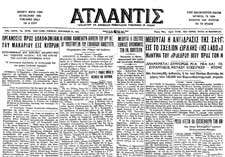
The Atlantis (1894–1973) was the first successful Greek-language daily newspaper published in the United States.[42] The newspaper was founded in 1894 by Solon J. and Demetrius J. Vlasto, descendants of the Greek noble family, Vlasto.[i][43] The paper was headed by a member of the Vlasto family until it closed in 1973. Published in New York City, it had a national circulation and influence. Atlantis supported the royalist faction in Greek politics until the mid-1960s. Atlantis editorial themes included naturalization, war relief, Greek-American business interests, and Greek religious unity.[42]
As of 2020, Ethnikos Kyrix (Greek: Εθνικός Κήρυξ, 1915–) is the only Greek-language daily publication based in the United States. Headquartered in New York City, its articles focus on the Greek diaspora in the United States as well as current events in Greece and Cyprus. In contrast to its competitor Atlantis, Ethnikos Kyrix historially supported liberal causes in Greece and America, including the progressive forces of Eleftherios Venizelos in Greece and the New Deal stateside.[42][44] A companion weekly edition The National Herald (1997–) is in circulation and features similar content presented in English.[45] The Greek Orthodox Archdiocese of America publishes the monthly Orthodox Observer (1934–) in both Greek and English for news and information regarding the Greek Orthodox Church as a whole, as well as its American parishes.[46]
In popular culture
- Greek American novelist Jeffrey Eugenides won the 2003 Pulitzer Prize for his novel Middlesex, about a Greek American family in Detroit.
- In 1967, Academy Award-winning film-director Elia Kazan published a novel, The Arrangement: A Novel, about a conflicted Greek American living a double life as an advertising executive and muckraking journalist. Kazan, who died in September 2003, was a Greek American.
- The popular 1970s show Kojak, featured Telly Savalas as Greek American police detective Theo Kojak, and his brother George as detective Stavros. Kojak was originally supposed to be Polish (hence the name), but this was changed to match Savalas' profile.
- The 2002 comedy film My Big Fat Greek Wedding portrayed the love story of a Greek American woman (portrayed by Greek Canadian Nia Vardalos) and a non-Greek American man (specifically a White Anglo-Saxon Protestant). It also examines the protagonist's troubled love/hate relationship with her cultural heritage and value system. The movie spawned an unsuccessful TV series, My Big Fat Greek Life. The sequel, My Big Fat Greek Wedding 2, was released in March 2016.
- The Famous Teddy Z was an acclaimed but short-lived TV series about a fictional talent agent named Teddy Zakalakis, portrayed by Jon Cryer.
- The TV series Full House was about a family that included Greek American Uncle Jesse Katsopolis, portrayed by Greek American actor John Stamos. Jesse's surname was changed from Cochran to Katsopolis after the first season because Stamos wanted to portray his Greek American heritage. Jesse's Greek dad was also a recurring character. Stamos reprises the role of Jesse in the 2016 sequel sitcom, Fuller House.
- The Olympia Cafe was a recurring sketch in the early years of Saturday Night Live. More recently, Tina Fey has often joked about her Greek heritage on the show.
- Tom's Restaurant, a Greek American owned business, has become one of the symbols of urban New York life.
- Elektra Natchios is a Marvel Comics superhero, portrayed by Jennifer Garner in the 2003 movie Daredevil and the 2005 movie Elektra. Élodie Yung portrays the character in the second season of the Netflix series Marvel's Daredevil, which debuted in 2016.
- Several entertainers and other performing artists including Johnny Otis, Tina Fey, Kelly Clarkson, Alexander Frey, John Aniston, Jennifer Aniston, Melina Kanakaredes, Zach Galifianakis, Tommy Lee, Demetri Martin, Paul Cavonis, Criss Angel, Elias Koteas, Amy Sedaris, Andy Milonakis, Art Alexakis and Billy Zane are of Greek descent.
- Writer, performer and radio-commentator David Sedaris satirizes growing up in a Greek American household in suburban North Carolina in several of his essays.
- Athletes such as Pete Sampras, Harry Agganis, Chris Chelios, Dean Karnazes, Alex Karras, Alexi Lalas, Dave Batista, Greg Louganis, Nick Markakis, Kurt Rambis, Tom Pappas and Jim Londos are of Greek descent.
- New Greek Television Inc., NGTV on Time Warner Cable a rebranding of the 25 year old Greek Television Channel of New York[47]
Greek nationality
.jpg)
Any person who is ethnically Greek born outside of Greece may become a Greek citizen through naturalization by proving that a parent or grandparent was born as a national of Greece. The Greek ancestor's birth certificate and marriage certificate are required, along with the applicant's birth certificate and the birth certificates of all generations in between until the relation between the applicant and the person with Greek citizenship is proven.
Organizations
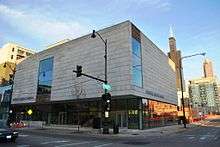
There are hundreds of regional, religious and professional Greek American organizations. Some of the largest and most notable include:
- The American Hellenic Educational Progressive Association (AHEPA) is the largest community organization of Greek Americans. It was founded in Atlanta, Georgia in 1922 to counter the anti-Greek attacks by the Ku Klux Klan during that time period. Its current membership exceeds 18,000.
- The Greek Orthodox Archdiocese of America is the religious organization most closely associated with the Greek American community. It was established in 1921, and is under the leadership of the Ecumenical Patriarchate of Constantinople. The church operates the Greek Orthodox Youth of America, the largest Orthodox Christian youth group in the United States.
- The American Hellenic Institute, an advocacy group for Greek Americans, and its lobbying arm, the American Hellenic Institute Public Affairs Committee.
- The Next Generation Initiative, a foundation that works with prominent Greek American leaders and executives to offer educational opportunities such as internships and master classes through a network of more than 5,500 Greek American students and 2,500 professors on 200+ college campuses.
- The Council of Hellenes Abroad is a Greek government sponsored umbrella organization for Greek immigrant organizations worldwide.
- The Hellenic Society Paideia has been promoting Hellenism and Orthodoxy since 1977 by placing Greek and Byzantium classes in high schools and universities, offering study abroad programs to Greece year round, and with various building projects throughout the country. Anywhere from 200-500 students travel to Greece with Paideia per year. Information specifically for the study abroad programs can be found at www.hellenicstudiespaideia.org Currently "Paideia" is constructing a Classical Greek Amphitheater at the University of Connecticut and a Center for Hellenic Studies at the University of Rhode Island.[48]
- The National Hellenic Student Association (NHSA)[49] is the independent network of the Hellenic Student Associations (HSAs) across the United States. By linking all the Greek, Greek-American and Cypriot students of the American educational institutions, the organization can promote ideas and projects and enrich the Hellenic spirit on campuses nationwide.
- Many topika somatéa (local councils) or clubs representing the local regional homeland of Greeks in America. Among the scores of such clubs, larger "umbrella" organizations include the Pan Macedonian Association (one example is the Drosopigi Society, in Rochester, New York, hailing from the village of Drosopigi in Northern Greece outside of the city of Florina) the Panepirotic Federation, the Pan Cretan Association, the Pan-Icarian Brotherhood, the Pan Pontian Federation of U.S.A-Canada, the Chios Societies of America & Canada, the Cyprus Federation of America, the Pan-Laconian Federation of the USA & Canada, the Pan-Messinian Federation of the USA & Canada, the Pan-Arcadian Federation of America and several associations of refugees from areas in the former Ottoman territories.
- The National Hellenic Museum in Greektown, Chicago
Notable people
See also
- Greeks in Omaha, Nebraska
- Greeks
- Greek diaspora
- Diaspora politics in the United States
- European Americans
- Grecian Echoes
- Greek Cypriots
- Greek Festival
- Greektown
- Hyphenated American
- Greek Canadians
- Greek British
- Greek Australians
- Greek New Zealanders
- Greek-American cuisine
- Anti-Hellenism
- Hellenophilia
- List of Greek Americans
References
- "Total Ancestry Reported". United States Census Bureau. 2010. Archived from the original on January 18, 2015. Retrieved December 4, 2014.
- "SELECTED POPULATION PROFILE IN THE UNITED STATES 2010-2012 American Community Survey 3-Year Estimates". United States Census Bureau. Archived from the original on February 12, 2020. Retrieved December 13, 2014.
- "SELECTED POPULATION PROFILE IN THE UNITED STATES 2010-2012 American Community Survey 3-Year Estimates". United States Census Bureau. Archived from the original on February 12, 2020. Retrieved December 13, 2014.
- "SELECTED POPULATION PROFILE IN THE UNITED STATES 2010-2012 American Community Survey 3-Year Estimates". United States Census Bureau. Archived from the original on February 12, 2020. Retrieved December 13, 2014.
- "SELECTED POPULATION PROFILE IN THE UNITED STATES 2010-2012 American Community Survey 3-Year Estimates". United States Census Bureau. Archived from the original on February 12, 2020. Retrieved December 13, 2014.
- "SELECTED POPULATION PROFILE IN THE UNITED STATES 2010-2012 American Community Survey 3-Year Estimates". United States Census Bureau. Archived from the original on February 12, 2020. Retrieved December 13, 2014.
- "SELECTED POPULATION PROFILE IN THE UNITED STATES 2010-2012 American Community Survey 3-Year Estimates". United States Census Bureau. Archived from the original on February 12, 2020. Retrieved December 13, 2014.
- "SELECTED POPULATION PROFILE IN THE UNITED STATES 2010-2012 American Community Survey 3-Year Estimates". United States Census Bureau. Archived from the original on February 12, 2020. Retrieved December 13, 2014.
- "SELECTED POPULATION PROFILE IN THE UNITED STATES 2010-2012 American Community Survey 3-Year Estimates". United States Census Bureau. Archived from the original on February 12, 2020. Retrieved December 13, 2014.
- "SELECTED POPULATION PROFILE IN THE UNITED STATES 2011-2013 American Community Survey 3-Year Estimates". United States Census Bureau. Archived from the original on February 12, 2020. Retrieved December 13, 2014.
- "SELECTED POPULATION PROFILE IN THE UNITED STATES 2010-2012 American Community Survey 3-Year Estimates". United States Census Bureau. Archived from the original on February 12, 2020. Retrieved December 13, 2014.
- "Greek: Source: American Community Survey 5-Year Estimates, Public Use Microdata Sample, 2006–2010". Modern Language Association. Retrieved March 24, 2017.
- "Yearbook of Immigration Statistics: 2012 Supplemental Table 2". U.S. Department of Homeland Security. Retrieved April 1, 2013.
- "Yearbook of Immigration Statistics: 2009 - Supplemental Table 2". Retrieved April 24, 2010.
- MacDougald, James (2018). The Pánfilo de Narváez Expedition of 1528. St. Petersburg, FL: Marsden House. ISBN 978-1-4834-8671-0.
- "Cabeza de Vaca's La Relacion". Retrieved March 17, 2015.
- "Cabeza de Vaca's La Relacion". Retrieved March 17, 2015.
- Adorno, Rolena; Pautz, Patrick (September 15, 1999). Álvar Núñez Cabeza de Vaca: His Account, His Life, and the Expedition of Panfilo de Narváez. Lincoln: University of Nebraska Press. ISBN 978-0-8032-1463-7., 3 vols.
- Leonard, M. C. Bob. "The Floridians: British Colonialism in Florida 1763-1783". floridahistory.org. Retrieved March 24, 2017.
- Polopolus, Leonidas C. "A Brief History of Hellenism in Florida". University of Florida, Center for Greek Studies. Archived from the original on February 24, 2002.
- "History of the Holy Trinity Cathedral". greekfestnola.com. Archived from the original on May 20, 2007.
- Barkan, Elliott Robert (1999). A Nation of Peoples: A Sourcebook on America's Multicultural Heritage. Greenwood Publishing Group. pp. 252–253. ISBN 978-0-313-29961-2.
- Κατατρεγμένοι Έλληνες από τη Μ. Ασία στις ΗΠΑ [Persecuted Greeks from Asia Minor in the USA] (in Greek). mpa.gr. Archived from the original on August 7, 2004.
- Frangos, Steve (March 12, 2005). "Picture Bride Era in Greek American History". The National Herald. Retrieved March 24, 2017 – via Preservation of American Hellenic History.
- Berger, Joseph (March 16, 2008). "Diners in Changing Hands; Greek Ownership on the Wane". New York Times. Retrieved March 24, 2017.
- Kleiman, Dena (February 27, 1991). "Greek Diners, Where Anything Is Possible". New York Times. Retrieved May 27, 2009.
... Greeks became a visible presence in the diner and coffee shop business in the late 1950s after several waves of immigration. They congregated largely on the East Coast, where the food service industry provided an easy economic foothold for many immigrants who were often unskilled and unable to speak English. As with immigrants from many nations, one relative would send word of opportunity back home, encouraging others to come to America
- Annie Correal and Colleen Wright (July 5, 2015). "Greeks in New York Talk and Cheer, Then Debate Future After Referendum". The New York Times. Retrieved July 5, 2015.
- "Rank of States for Selected Ancestry Groups with 100,00 or more persons: 1980" (PDF). United States Census Bureau. Retrieved November 30, 2012.
- "1990 Census of Population Detailed Ancestry Groups for States" (PDF). United States Census Bureau. September 18, 1992. Retrieved November 30, 2012.
- "Ancestry: 2000". United States Census Bureau. Archived from the original on February 12, 2020. Retrieved November 30, 2012.
- "Total ancestry categories tallied for people with one or more ancestry categories reported 2010 American Community Survey 1-Year Estimates". United States Census Bureau. Archived from the original on January 18, 2015. Retrieved November 30, 2012.
- "2011-2015 American Community Survey Selected Population Tables". Retrieved August 10, 2018.
- "2016 American Community Survey Selected Population Tables". American FactFinder. U.S. Census Bureau. Archived from the original on February 14, 2020. Retrieved March 2, 2019.
- "Ancestry Map of Greek Communities". Epodunk.com. Archived from the original on February 20, 2007. Retrieved August 12, 2008.
- "Top 101 cities with the most residents born in Greece (population 500+)". city-data.com. Retrieved August 12, 2008.
- "Appendix Table 2. Languages Spoken at Home: 1980, 1990, 2000, and 2007". United States Census Bureau. Retrieved August 6, 2012.
- "Detailed Language Spoken at Home and Ability to Speak English for Persons 5 Years and Over --50 Languages with Greatest Number of Speakers: United States 1990". United States Census Bureau. 1990. Retrieved July 22, 2012.
- "Language Spoken at Home: 2000". United States Bureau of the Census. Archived from the original on February 12, 2020. Retrieved August 8, 2012.
- "Detailed Languages Spoken at Home by English-Speaking Ability for the Population 5 Years and Over: 2011" (PDF). census.gov. US Census Bureau. p. 3. Archived from the original (PDF) on September 8, 2019.
- "Mother Tongue of the Foreign-Born Population: 1910 to 1940, 1960, and 1970". United States Census Bureau. March 9, 1999. Retrieved August 6, 2012.
- Bureau, U.S. Census. "American FactFinder - Results". factfinder.census.gov. Archived from the original on February 14, 2020. Retrieved April 23, 2018.
- Judith Felsten "Atlantis, National Daily Newspaper 1894-1973", Atlantis, National Daily Newspaper 1894-1973, The Research Library of the Balch Institute for Ethnic Studies, December 1982
- Magny, Claude Drigon. Livre D'or De La Noblesse Européenne, Ed. 2. Paris: Aubry, 1856, pg. 441.
- Northrup, Mary, "The Greek press in America", Cobblestone, Dec 1996, Vol. 17 Issue 9, p. 17.
- "The National Herald – About Us". The National Herald. Retrieved April 17, 2020.
- "Orthodox Observer". Greek Orthodox Archdiocese of America. Retrieved April 17, 2020.
- "Page 56287 – The National Herald". thenationalherald.com.
- "paideiausa". Retrieved March 17, 2015.
- "NHSA". nhsaofamerica.org. Retrieved March 17, 2015.
Further reading
- Callinicos, Constance. American Aphrodite: Becoming Female in Greek America (Pella, 1990).
- Georgakas, Dan. My Detroit: Growing Up Greek and American in Motor City (Pella, 2006).
- Jurgens, Jane. "Greek Americans." Gale Encyclopedia of Multicultural America, edited by Thomas Riggs, (3rd ed., vol. 2, Gale, 2014), pp. 237–253. Online
- Jusdanis, Gregory. "Greek Americans and the diaspora." Diaspora: a journal of transnational studies 1#2 (1991): 209–223. Excerpt
- Kunkelman, Gary. The Religion of Ethnicity: Belief and Belonging in a Greek-American Community (Garland, 1990).
- Moskos, Peter C. Greek Americans: struggle and success (Routledge, 2017).
- Orfanos, Spyros D. Reading Greek America: Studies in the Experience of Greeks in the United States (Pella, 2002).
- Rouvelas, Marilyn. A Guide to Greek Traditions and Customs in America (Attica, 1993).
- Scourby, Alice. "Three generations of Greek Americans: A study in ethnicity." International Migration Review 14.1 (1980): 43–52. Online
- Schultz, Sandra L. "Adjusting Marriage Tradition: Greeks to Greek-Americans." Journal of Comparative Family Studies 12.2 (1981): 205–218.
External links
- Embassy and Consulates
- Charitable organizations
- The Hellenic Initiative
- AHEPA home page - American Hellenic Educational Progressive Association
- The Hellenic Society "Paideia"
- Greek America Foundation
- National Hellenic Society
- Onassis Foundation (USA)
- Hellenic Times Scholarship Fund
- Libraries and museums
- National Hellenic Museum
- Tsakopoulos Hellenic Collection at California State University, Sacramento
- Basil J. Vlavianos manuscript collection at California State University, Sacramento
- The Museum of Greek Culture at The New England Carousel Museum constructed by The Hellenic Society Paideia housing a Macedonia exhibit.
- Trade organizations
- Affiliate trade organizations
- Hellenic Canadian Board of Trade
- Hellenic Canadian Lawyers Association
- Hellenic-Argentine Chamber of Industry and Commerce (C.I.C.H.A.)
- Websites
- Famous Greek-Americans - A comprehensive list of famous Greeks and Greek Americans.
